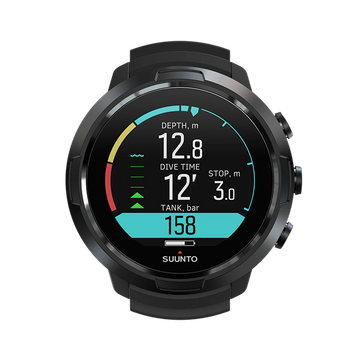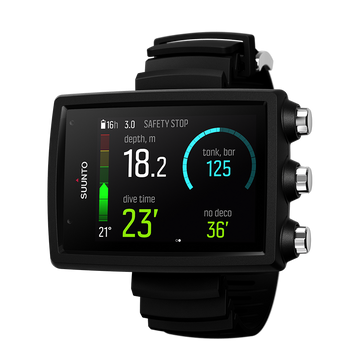

Suunto-blogg
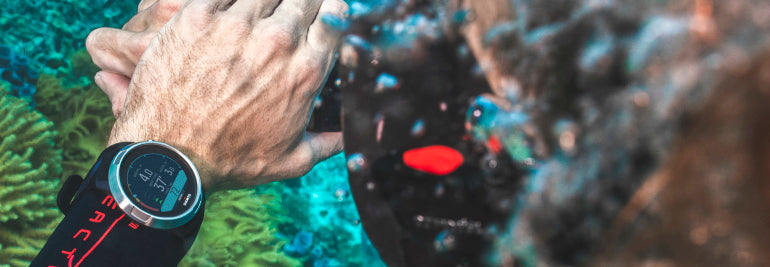
Why I Dive
A team of Suunto divers embarked on an epic journey to the remote islands of West Papua last year to explore the flourishing waters of Raja Ampat. They were amongst the first divers to experience the Suunto D5, and to shared jaw dropping video and images every diver dreams of seeing firsthand.
This marine environment there boasts the richest reefs in the world, and unsurprisingly entices divers from all over the globe to make the journey and discover this paradise for themselves.
Let's explore together!
Why I Dive, film by Janne Suhonen.
Photographer Steve Woods.
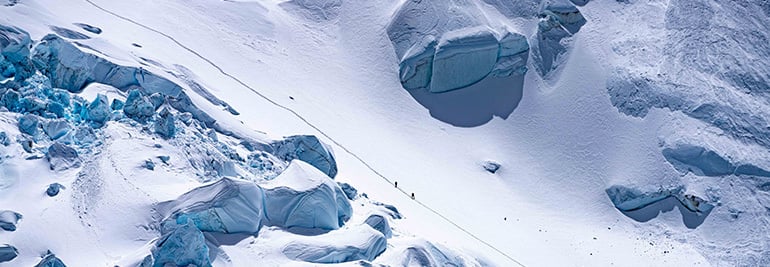
8 avalanche safety checks to tick off before the ski season
© Mark Smiley
Pro mountain guide, outdoor educator and Suunto ambassador Mark Smiley says knowing how to mitigate avalanche danger is a “$50,000 question” – there is no perfect answer; it consists of doing many small things right.
There is always danger in an alpine environment. Clearly knowing that, and having respect for the mountains, is where mitigation begins. Showing that respect comes down to being mindful of the details.
“Think of going backcountry skiing the same as a climber roping up for a climb, or a pilot getting ready for takeoff,” says Mark, 38, who is currently adventuring in the Southern Alps of New Zealand. “Doing some form of regular check is a great habit to get into.
“Early season snow dumps are super fun because the long wait is over, but it’s super important to know that avalanches can and do occur every year in these first storm systems.”
Based in Jackson Hole, Wyoming, Mark runs popular online outdoor education courses, and guides expeditions within the US and around the world. He and his mountaineer partner Janelle have climbed all 48 Classic Climbs of North America, as well as ski touring across the entire European Alps in 36 days. The couple live for the mountains.
Here is the safety check Mark does at the start of each skimo season. “These don’t take much time and avoid mindless mistakes that could have big consequences,” Mark says.
© Mark Smiley
Gear check!
Put new batteries in your avalanche beacon, and make sure the battery terminals are shiny and clean (sometimes batteries can corrode the terminals, resulting in bad connection).
It’s also a good idea to have extra kit in your car, such as extra avalanche gear, skins, AAA batteries, sunglasses, and sunscreen, that you can offer if someone forgets his or hers. “This saves a lot of time and hassle at the trailhead,” Mark says.
Slow down
Give yourself triple the amount of time to get ready for a trip because forgetting things at the start of the season is all too easy. Don’t rush, slow down, and do all those small things right.
Practice makes perfect
“Once there is enough snow on the ground, visit a beacon park and train with your beacon,” Mark says. “Especially if you or your partner invested in a new one this year.”
Get local knowledge
Before you go into the mountains, get online and research the avalanche danger in the area you will be skiing in. Find out what the avalanche trends there are. “Hopefully you’ve been checking the weather the past 48-72 hours to see if there have been major sun, wind, or snow events,” Mark cautions. “Check the avalanche report to see what the danger rating is, and dig a little deeper to see what recent avalanches have occurred. The avalanche report will also list the problems of concern. Pick a ski line, up and down, to avoid those problems.”
Know the plan
“Get on the same page with your partner(s) as to where you’ll go, and what the plan B and C are if plan A isn't working out,” Mark advises.
Car park gear check
“When you get to the trailhead, check to make sure everyone has a beacon with 50% or more battery power, that it’s on and that it works to SEND and SEARCH,” Mark says. Ensure it’s stowed properly.
“Making sure your shovel and probe are still in your pack, and not beside the garage after you dug out the car, is a good idea as well.”
Store the beacon properly
Keep your beacon safely in the right location. If you store it in a harness, wear clothing over top of it. “Often I get super hot while touring, so I like to have my beacon in my zippered (not Velcro) pants pocket,” Mark says. “Make sure you have nothing else in there, so the zipper stays closed the entire day. Don't be lazy and put sunscreen, a buff, or chapstick in there, too.”
Take it easy
Early season dumps means well hidden rocks. Don’t be a maniac; reduce your speed at the start of the season and wear a helmet.
Lead images: © Mark Smiley
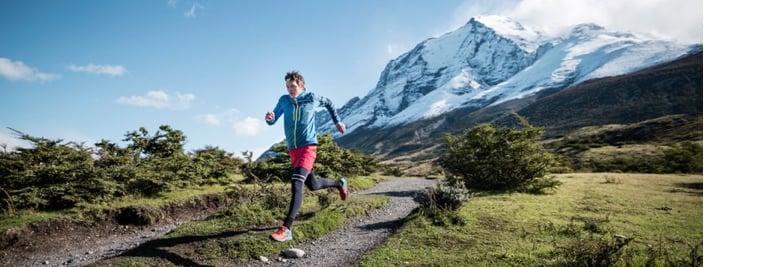
Celebrating the fall of the wall by running the “death strip”
© Philipp Reiter
Suunto athlete and filmmaker Philipp Reiter and eight other runners from Germany and Austria are setting out on November 1 to run the once feared militarized border – called the “death strip” by west Germans – that divided east and west Germany from 1952 to 1990.
“We have four campervans and runners of all different ages and originally from both sides of the former border,” Philipp says. “I know the history of the border from school, but if you are not born in that time, you don’t really understand what it was like then,” he says. “I think it’s going to be really nice learning about this.”
The 1400 km adventure run will include 16,000 m of vertical gain and the highest point on the route is the summit of Brocken, a 1142 m peak in the Harz Mountain Range. The team will run it as a relay, with one athlete running 15 km before the next steps in and takes over. Most of the route will be on quiet forest roads.
They are inviting local runners in towns and villages they pass through to follow their journey on Strava and to join them when they are nearby. Philipp is interested to hear the stories of people who lived during the time of the border.
“This project is about showing that even if it takes 40 years, there is always an opportunity to take borders down, even now,” he says, “These borders can be physical like this one, or they can be in the form of prejudices. How many people really try to understand the problems of another person?”
Map showing the former border, now called the Green Belt. And the remains of the Berlin Wall. © LENCER (CC BY-SA 3.0) © Photo by Isai Ramos on Unsplash
The inner German border, part of the Iron Curtain, stretched from the Baltic Sea to the former Czechoslovakia. The Berlin Wall was only a smart part of it. West Germans called it the “death strip” because it was so perilous to cross. The borderzone was fortified with trip-wire machine guns, more than a million landmines, 3000 attack dogs and guards with orders to shoot to kill.
In spite of this, thousands of people risked their lives trying to escape the totalitarian German Democratic Republic in the east for a better life in the Federal Republic of Germany in the west. Hundreds of them died in the process.
Since the fall of the wall, the borderzone has been demilitarized, and is now a popular area for cycling and walking. Thanks to a conservation project led by BUND Naturschutz what was once a “monument to repression” has been transformed into a “symbol of renewal”. Now called the Green Belt, the former border is a hotspot for wildlife.
This year marks the 30th anniversary of the fall of the Berlin Wall. Starting on November 4, there will be events and exhibitions across the city.
Follow Philipp and the team’s journey here on Strava.
This run is recorded using Suunto 9 watches. Learn more about them here.
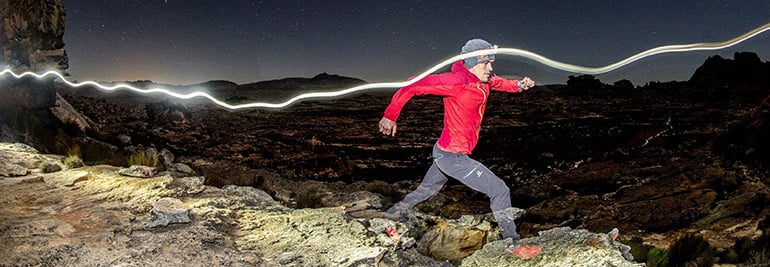
7 tips for running in the dark
© Dean Leslie / Red Bull Content Pool
As the northern hemisphere heads into winter, Ryan Sandes’s hometown, Cape Town, is coming out of it. He recently ran his new 13 Peaks route, starting at 3am, and had an eerie feeling that someone was watching him. “I looked around and there were all these little eyes looking at me from out of the darkness,” he says. “They were rock rabbits.”
Ryan has run in the dark in some gnarly places. He says it’s completely different to running in the day. “Running in the dark is a bit like running downhill – you have to be careful,” he cautions. Here are 7 tips to better enjoy running at night or early morning.
Stay safe
Tell someone where you are going and when you plan to be back. This is especially important if you are heading out for a trail run in the wild. Consider taking a tracking device, too. If you get disoriented or lost, remember you can use the Find Back feature and breadcrumb route on your Suunto 9 watch to be led back to your start point.
Make yourself visible
Buy yourself an assortment of reflectors for your clothing so you are clearly visible to cyclists and drivers from a distance. Use “biological motion” for increased visibility; this means lighting up your joints – ankles, knees, wrists and elbows, not the torso – so motorists and cyclists recognise you as a moving person.
Slow down
If you’re new to running in the dark, Ryan suggests slowing down until you get used to it. “The more you practice, the better you’ll get,” he says.
Master your headlamp
Wearing a headlamp is essential if you’re running in an area with no streetlights. Learning to focus and point the beam correctly takes some fiddling; best to test this at home before heading out. Aim the lamp so the beam illuminates the area about 10 m or so out from you, and make sure the light isn’t too focused or it can give you “tunnel vision”.
Learn to adjust the settings while you’re running to preserve battery life. “If you’re going downhill really fast you will need to have it brighter and with a bigger beam,” Ryan says. “If you are going uphill slowly you can turn it down.”
Look ahead, not down
Having the right head position is important. “Don’t drop your head and start looking at your feet because that automatically slows you down,” Ryan says. “Look ahead, and your brain will programme where your feet will go before they get there.”
Pick your lines
With the correct head position and beam focus, it makes it easier to see the contours of the terrain and coming obstacles. Staying focused, not spacing out, is essential when running in the dark. “Try to pick right lines [to follow] when you’re running so you can keep moving,” Ryan says. “You don’t want to lose concentration and end up going over a bunch of rocks, or scrambling through the bush.”
Enjoy the atmosphere
“Running in the dark gives an almost out of body experience,” Ryan says. “Everything is really peaceful, you can hear all the little sounds, everything seems fresher, and you become a lot more aware. Enjoy it!”
Lead images:
© Craig Kolesky / Red Bull Content Pool
© Graeme Murray / Red Bull Content Pool
Read more running related articles!
7 principles to help you find the flow
The lazy runner's guide to a marathon
Emelie Forsberg's 7 yoga poses for runners
7 tips for running in hot weather
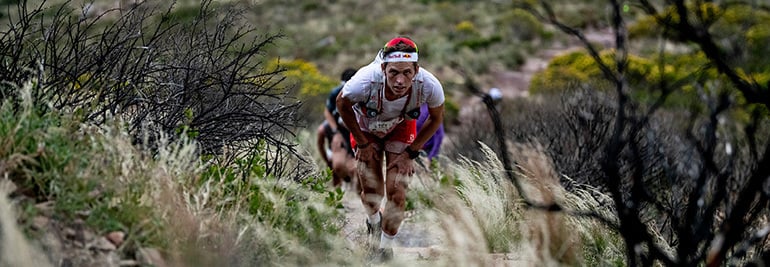
Hunter or the hunted? 7 race tactics for the trophy
Both of them know the feeling of being hunted. It’s when they’ve been in first place, and there’s a pack of wolves at their heels.
“When you are leading a race you often feel like a hunted animal,” Ryan says. “You are always looking behind you, are you going too fast, are you going slow enough, are the guys catching you? Mentally, that is super draining. Sometimes hunting is better than being hunted.”
Ryan, an ultra running champion, has felt invincible during some races, and that his competitors were “dead and buried”, only for them to suddenly catch up and pass him. Mel has literally run shoulder to shoulder against another triathlete for 15 km, in what she says “felt like an eternity”. In the last three kilometers she turned it on and left her rival in the dust.
“I started sprinting and not looking back,” Mel says. “It turns out she didn’t even try to come with me, but I didn’t turn around to check. I just kept pushing right to the line.
“The smarter and easier move would have been to sit in (behind) and wear my competitor down that way, but for some reason we both thought we needed the mental battle of running side by side for most of the run. Not a single word was spoken between us during this hour long battle. After the race, we both shared a laugh and commented on how much we made each other suffer out there. “
Here are Mel and Ryan’s seven tips for victory.
© Kelvin Trautman / Red Bull Content Pool
Keep a poker face
Both of them recommend putting on a brave face. Show your rivals nothing. “Control your breathing and keep good form at least when they can see you,” Mel says. “Make it look easy. Don’t make eye contact with your rivals.”
Stay to your strengths
Don’t try to run your rival’s race. “The key strategy is to run to your strength,” Ryan says. “If you're slightly better on the climbs, push them a little bit, so then your competitor has to push the downhills to catch up, smashing his legs in the process. It's all about trying to feel your competitor out, seeing what their weaknesses are, compared to your strengths.”
Remember, they hurt too
Feeling the pain? Quads burning? That’s because you’re human, and your rivals are, too. “I know if I’m hurting so are my competitors so I stay focused and imagine them struggling and working hard,” Mel says. “That gives me a little confidence boost.”
Mind game your rival
Watch your rival closely. If he or she is struggling, accelerate. “When you think they’re feeling bad, start talking to him or her with your poker face on, pretending you’re feeling good,” Ryan suggests. “It’s a bit of a game of roulette; sometimes it pays off, other times it doesn’t.”
Training is your dojo
Training is when you test your mettle. It’s when you develop the tenacity and forbearance you’ll need to survive your race battles. “Never give up in training,” Mel says. “When I’m really hurting in training, I imagine I’m in a race situation and that if I back off now or give up, I’ve just lost the race. The more times you throw in the towel in training the harder it will be to push through the pain in a race.”
Ryan recommends working on your weaknesses in training. “If descending isn’t a strength for you, work on it,” he says. And when you’re training, run at different intensities.”
Learn to adapt
While it’s necessary to have a race plan, remember whatever your plan is, no matter how slick it is, on race day it will probably go out the window. “It’s so important to keep your mental focus and stay calm and collected,” Ryan says. “The person who is the most successful in a race is the one who can think the best on his or her feet and go with the flow.”
Kindness can pay off
Yes, racing is about winning. But that doesn’t always demand a ruthless attempt to crush the opposition. Sometimes a little camaraderie and kindness can go a long way. “If a competitor is struggling, for example when they need nutrition or a cold sponge, if I have the energy to help out I will because this not only helps them, but it also helps me,” Mel explains. “Helping someone makes you feel good and when you feel good you race better. This is a great way to get a little lift.”
Lead images:
© Craig Kolesky / Red Bull Content Pool
© Kelvin Trautman / Red Bull Content Pool
Read more:
The art of battle: six tactics to slay your competitors

Jill Heinerth Joins Suunto at DEMA 2019
"I have dived and documented climate change firsthand for decades. How we plan for it and adapt to it in the next few years will determine the future of our civilization. That’s what draws me to scuba dive under the ice in the northern reaches of my homeland, Canada.”-Jill Heinerth wrote for the LA Times this week.
Jill Heinerth © Under teh sea ice near Bylot Island
Spending the first half of the year on the Underwater Canada Expedition, Heinerth uses her adventures to connect people to their water planet compelled to demonstrate how their lives impact the source. Jill and her team successfully visited every province and territory in Canada to dive and tell the tales of water from her experiences in each region.
Unstoppable in her plight explorer, cave diver and Suunto Ambassador Jill Heinerth is currently travelling and speaking to audiences and media platforms across Canada and USA on her book tour. Released in August, Into the Planet is a thrilling insight into places inside this earth you may not have imagined existed, that Heinerth has dived while bravely illustrating intense political issues and presenting hard evidence about the impacted ice caps and beyond.
Photo Courtesy of U.S. Deep Caving Team/Wes Skiles. © Diving with the US Deep Caving Team at Wakulla Springs, I felt like I was involved in a space shot. But there is no Mission Control to call for help on a journey that can reach miles into the earth.
With the upcoming DEMA Show fast approaching on the diving event calendar, Suunto Dive are super excited to announce Jill will be joining the Suunto stand to sign copies of her incredible adventures in documenting climate change, cave diving and film making for the past 30 years on 13th and 14th November 2019 in Orlando, Florida. Into the Planet is a riveting account of one of the most dangerous yet exhilarating pursuits in the world.
Jill Heinerth © Ice Formations
“As one of the most celebrated cave divers in the world, Jill Heinerth has seen the planet in a way almost no one has. In a workday, she might swim below your home, through conduits in volcanoes or cracks in the world’s largest iceberg. She’s an explorer, a scientist’s eyes and hands underwater—discovering new species and examining our finite freshwater reserves—and a filmmaker documenting the wonders of underwater life." Into the Pla
Often the lone woman in a male-dominated domain, she tests the limits of human endurance at every tight turn, risking her life with each mission. To not only survive in this world but excel, Jill has had to learn how to master fear like no other.” -Into the Planet by Jill Heinerth
































